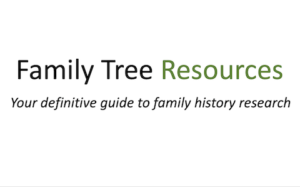Nonconformists did not worship in a parish church, preferring a chapel or meeting house, meaning you may not be able to find them in parish registers.
Originally, these chapels were private buildings put to religious use. They did not have burial grounds so the dead had to be buried in local churchyards.
This changed with the implementation of the Toleration Act of 1691, which meant nonconformists could set up burial grounds. Until 1689, attending a church service in an Anglican Church was mandatory, and if a person did not attend, they could have been fined or had their lands seized.
Most congregations kept books of births and marriages, and after 1691, burials.
These registers were either kept by ministers who went round to each chapel, or by the individual chapel.
They were not considered admissible by a court, so you may find the baptisms of the children of your nonconformist ancestors in a local parish church.
Baptists opposed infant baptism, so you may find this is not the case if you have Baptists in your family.
Nearly 50,000 baptisms were registered in the General Register of Births of Children of Protestant Dissenters at Dr William’s Library in Red Cross Street, London.
It is possible to search records of birth, baptism, marriage, death and burial taken from non parish sources using http://www.bmdregisters.co.uk, which is the Official Non-Conformist and Non-Parochial BMDs Service.
Since 1837, the births, marriages and deaths of nonconformists are included in civil registration records, but before this date, they are not so easy to trace because each branch of nonconformism had their own chapels and kept their own records.
You will first need to discover the religious body your ancestors belonged to, and then find if any registers survive.
Some nonconformists kept birth, baptism, marriage and burial records from the late seventeenth century, but many chapels have no surviving registers until much later. Many marriages, however, had to take place in the Anglican Church after 1754, when Hardwicke’s Marriage Act was introduced.
Different Branches of Nonconformists
1532 Anabaptists
The original Anabaptists came from Germany and then established themselves in London. The forerunners of the Baptist churches, Anabaptists believed in adult baptism.
1560 Presbyterians
Presbyterianism became the official national creed of Scotland after the Reformation, but remained a nonconformist sect in England. Presbyterians believe a church should not be governed by an imposed hierarchy, but by its own elders.
1582 Congregationalists
‘The priesthood of all believers’ was part of the creed of Congregationalists, and they worshipped in complete equality. They were also governed by elders that had been elected and in 1972, in conjunction with the Presbyterians, they became the United Reformed Church.
1612 Baptists
Baptists believe in adult baptism and that everybody can obtain salvation. Baptists have especially deep roots in Wales, but have spread throughout the British Isles. Baptists split into different groups, but all groups are now brought together as the Baptist Union of Great Britain.
1640 Unitarians
Unitarians see God as a single entity, and denied the doctrine that He is a trinity. They also do not believe you are eternally punished for any sins you may have committed in this life.
Unitarians split into several groups, but have now merged into a single body called the General Assembly of Unitarian and Free Churches.
1650 Quakers (Society of Friends)
Quakers believe any sort of planned service is unnecessary, and that it is possible to have an informal service anywhere.
The records of Quakers are usually more detailed than that of their Anglican counterparts, sometimes including information regarding family members.
Quakers kept their own registers and indexes up to 1837 when Civil Registration came into force.
1729 Methodists
Methodism was founded by John Wesley, and later divided into those with Arminian and those with Calvinistic beliefs. Arminians were stronger in the North and West of England, while those with calvinistic beliefs were stronger in Wales.
1827 Plymouth Brethren
This was a small group of followers of a former Anglican named J N Darby and spread from Plymouth to become a national congregation.
They rejected the concept of formal ministry and believed in the autonomy of every local church. They had a strict social and religious outlook and were marred by disagreement.
They split into two groups in 1849, the groups being ‘Open Brethren’ and ‘Exclusive Brethren’.
1837 Church of Jesus Christ of Latter Day Saints (Mormons)
The Mormon Church was founded in New York in 1830, and the first British chapel was opened in Preston in 1837. Mormons believe in the baptism of the dead – salvation for those who made no religious commitments in their lifetime.
